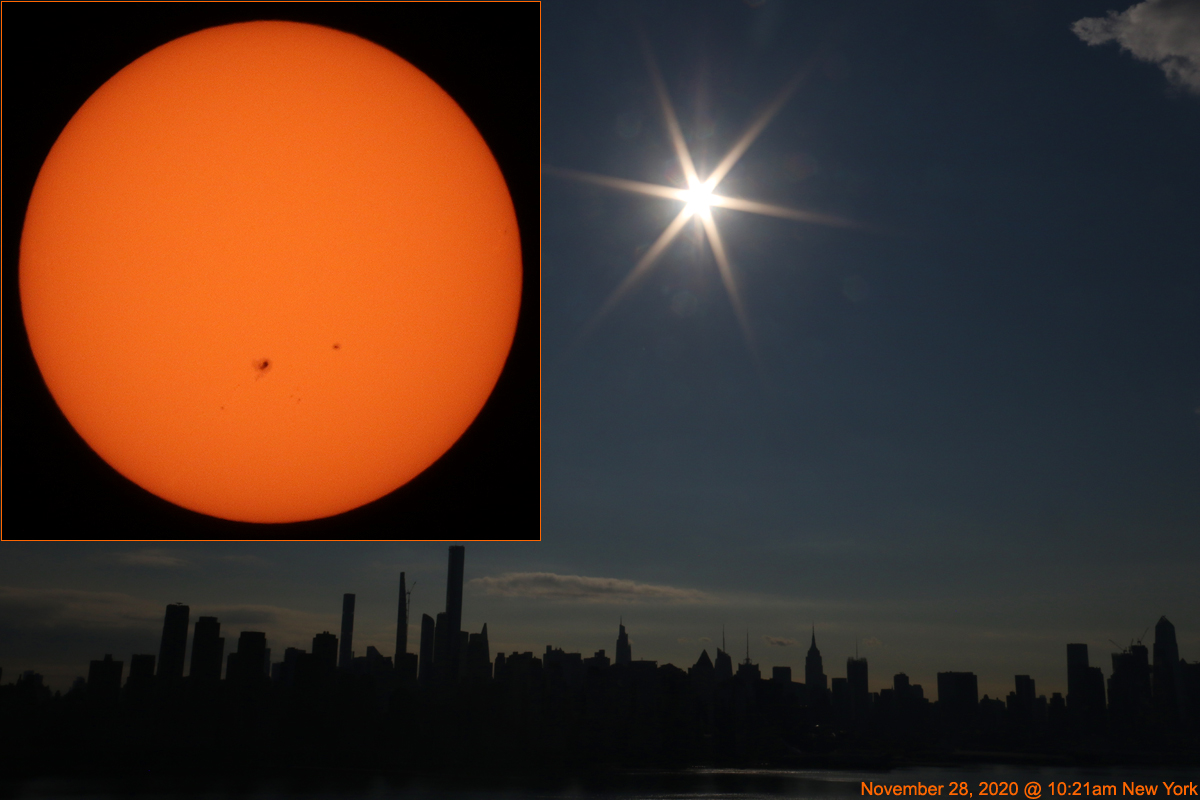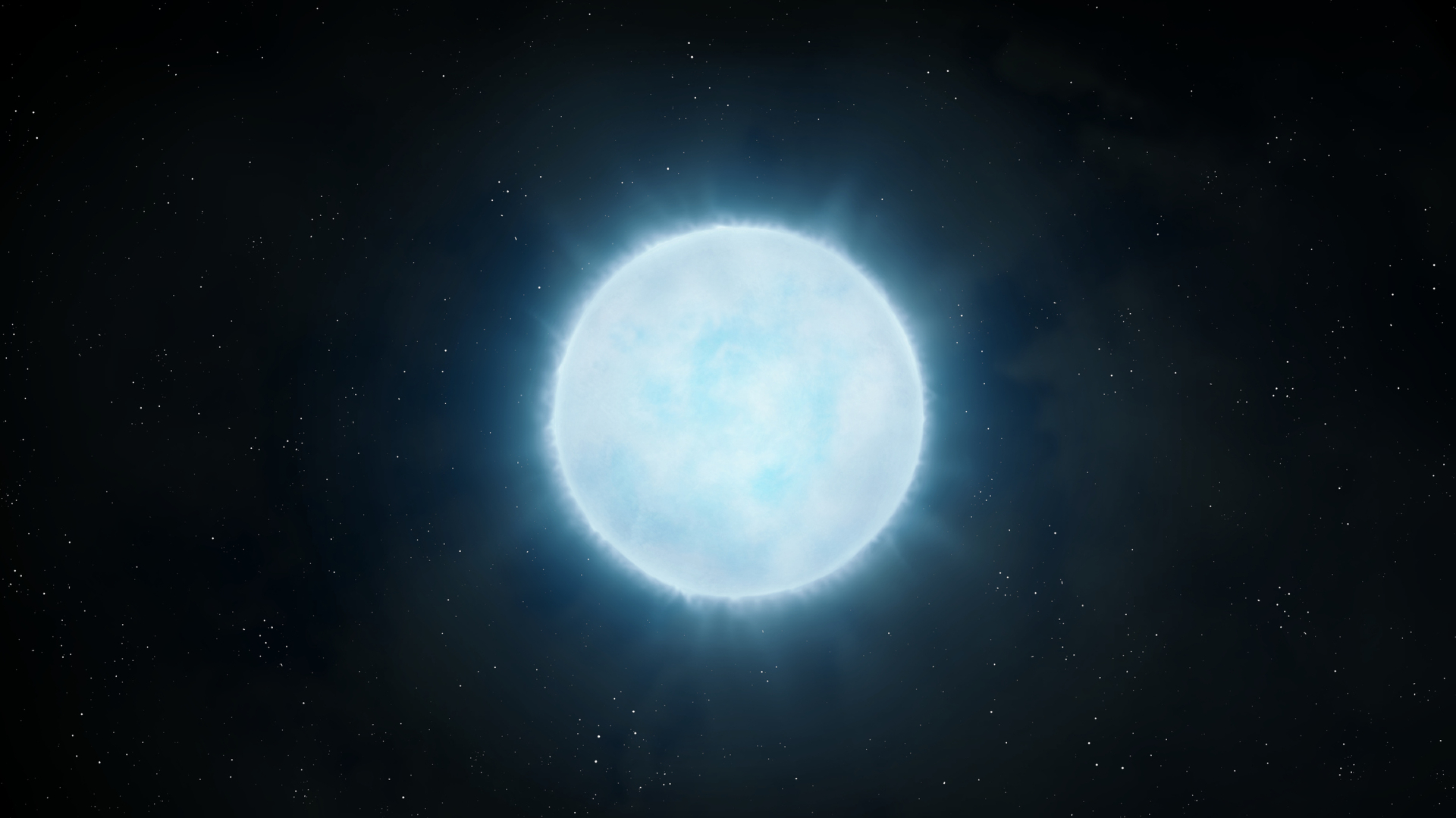Sun, spotted: Our speckled star shines over New York City (photo)

A speckled sun shines down on New York City in a gorgeous skywatcher photo.
Amateur astronomer Alexander Krivenyshev, president of WorldTimeZone.com, photographed the sun over the Big Apple on Saturday morning (Nov. 28). A close-up image he captured clearly shows a big sunspot known as AR2786 and its smaller cousin, AR2785.
Krivenyshev took the photos using a Canon EOS7D camera, with a solar filter attached for the close-up. Caution: Do not attempt to get such shots unless you too have a solar filter. Looking directly at the sun, with the naked eye or through instruments such as cameras or telescopes, can cause serious and permanent eye damage, including blindness.
Related: How to safely observe the sun (infographic)
AR2786 and AR2785 rotated into view shortly before Thanksgiving. AR2786 is several times wider than Earth.
Sunspots are temporary dark patches that are significantly cooler than the rest of the solar surface — about 6,500 degrees Fahrenheit (3,600 degrees Celsius), compared to 10,000 degrees F (5,500 C).
Sunspots occur where solar magnetic fields are especially strong, and they serve as launch pads for flares and eruptions of superhot plasma known as coronal mass ejections. For centuries, scientists have counted sunspots as a way to gauge solar activity.
Breaking space news, the latest updates on rocket launches, skywatching events and more!
That activity waxes and wanes on an 11-year cycle. The latest one, solar cycle 25, began in December 2019 and is expected to be fairly quiet, as solar cycle 24 was. But the sun is now acting out, at least a little bit: On Sunday (Nov. 29), our star fired off its most powerful flare in more than three years.
Mike Wall is the author of "Out There" (Grand Central Publishing, 2018; illustrated by Karl Tate), a book about the search for alien life. Follow him on Twitter @michaeldwall. Follow us on Twitter @Spacedotcom or Facebook.

Michael Wall is a Senior Space Writer with Space.com and joined the team in 2010. He primarily covers exoplanets, spaceflight and military space, but has been known to dabble in the space art beat. His book about the search for alien life, "Out There," was published on Nov. 13, 2018. Before becoming a science writer, Michael worked as a herpetologist and wildlife biologist. He has a Ph.D. in evolutionary biology from the University of Sydney, Australia, a bachelor's degree from the University of Arizona, and a graduate certificate in science writing from the University of California, Santa Cruz. To find out what his latest project is, you can follow Michael on Twitter.
